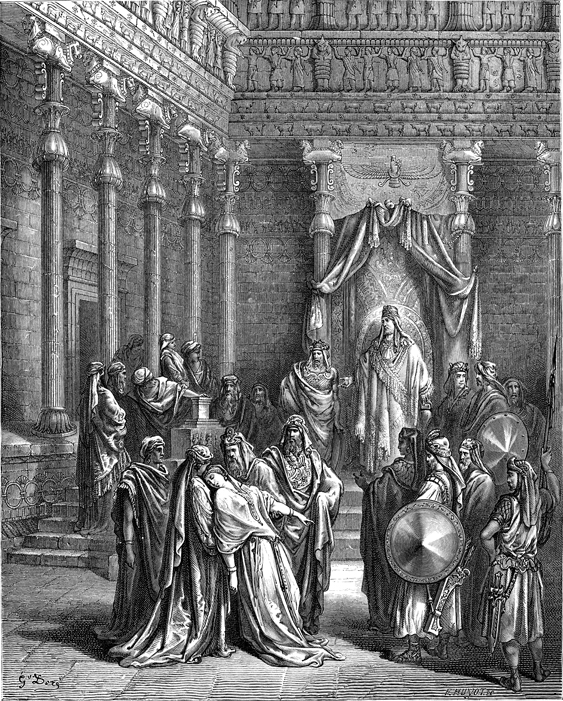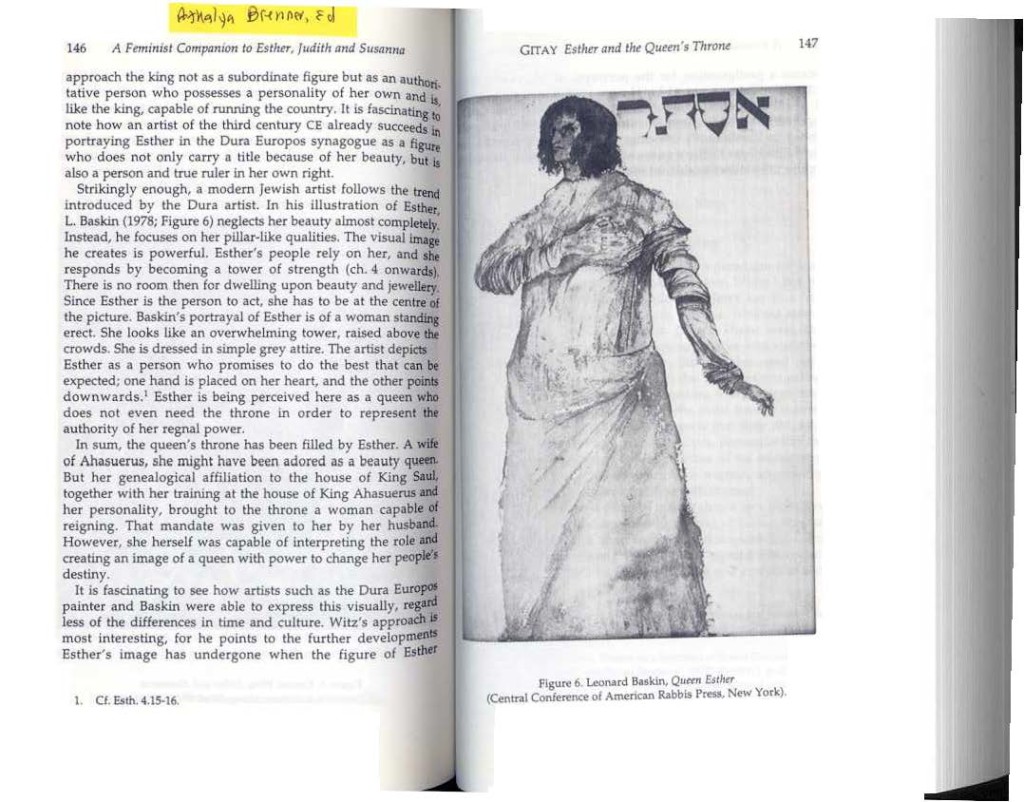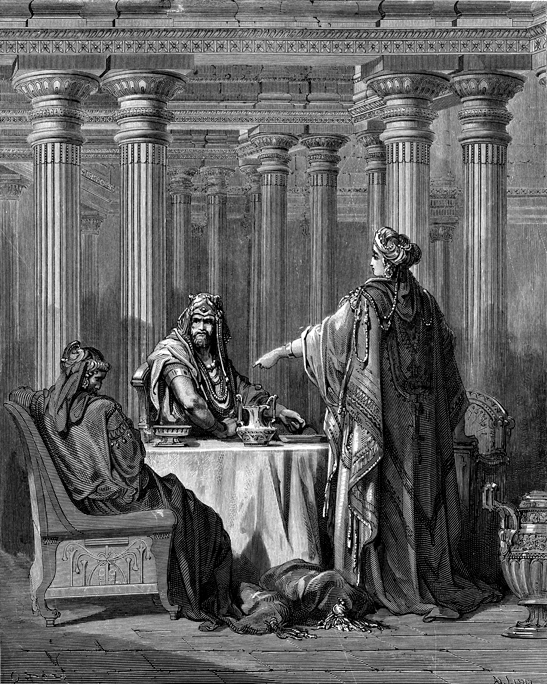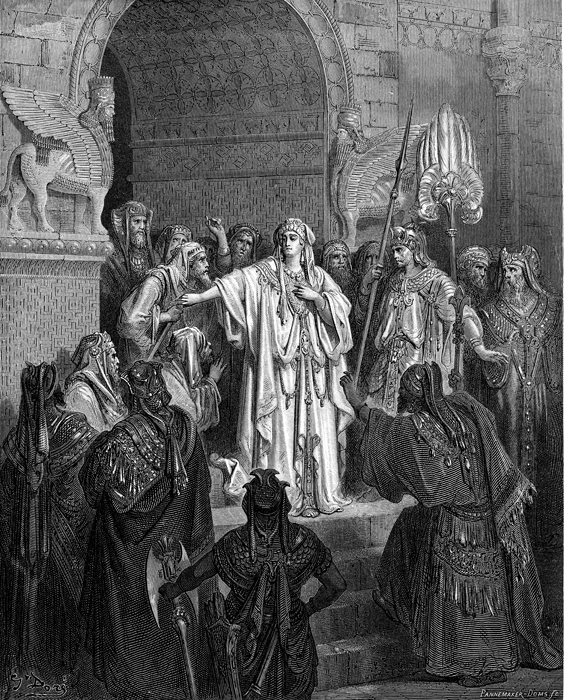Purim is a time when we remember to think about Esther and perhaps learn to think about Vashti. I present here a small picture gallery. Images have the power to convey ideas very quickly.
I hope you will enjoy this visual tour and that this will stimulate thoughts about Esther, Vashti, gender politics, the meaning of Purim, and your own identity.
The first image is by Gustav Dore and can be found in digital format in the Pitts Theology Library at Emory University. Notice Vashti’s power, independence and command. She is recognizably a woman, but on her own terms.
Now we have Dore’s Esther, version one. Here we see Esther in similar command, accusing Haman before the King Ahasvuerus. Notice how Esther dominates both King and subject. Like Vashti she is a woman on her own terms.
Dore has another view of Esther. I believe in this case he is illustrating a verse from the Greek version. Note how Esther has lost her power and how King Ahasvuerus dominates. In her aspect as woman she is now subject of male gaze, vulnerable, not in command.

Esther Faints
And finally, one more modern illustration from Athalya Brenner’s book, A Feminist Companion to Esther, Judith and Susanna. The illustration is by Leonard Baskin and is discussed on the page. This version of command is strikingly different in quality. Brenner calls it “pillar-like.” It seems to lose characteristics of gender altogether. Even more so, seems to lose characteristics of being human.


